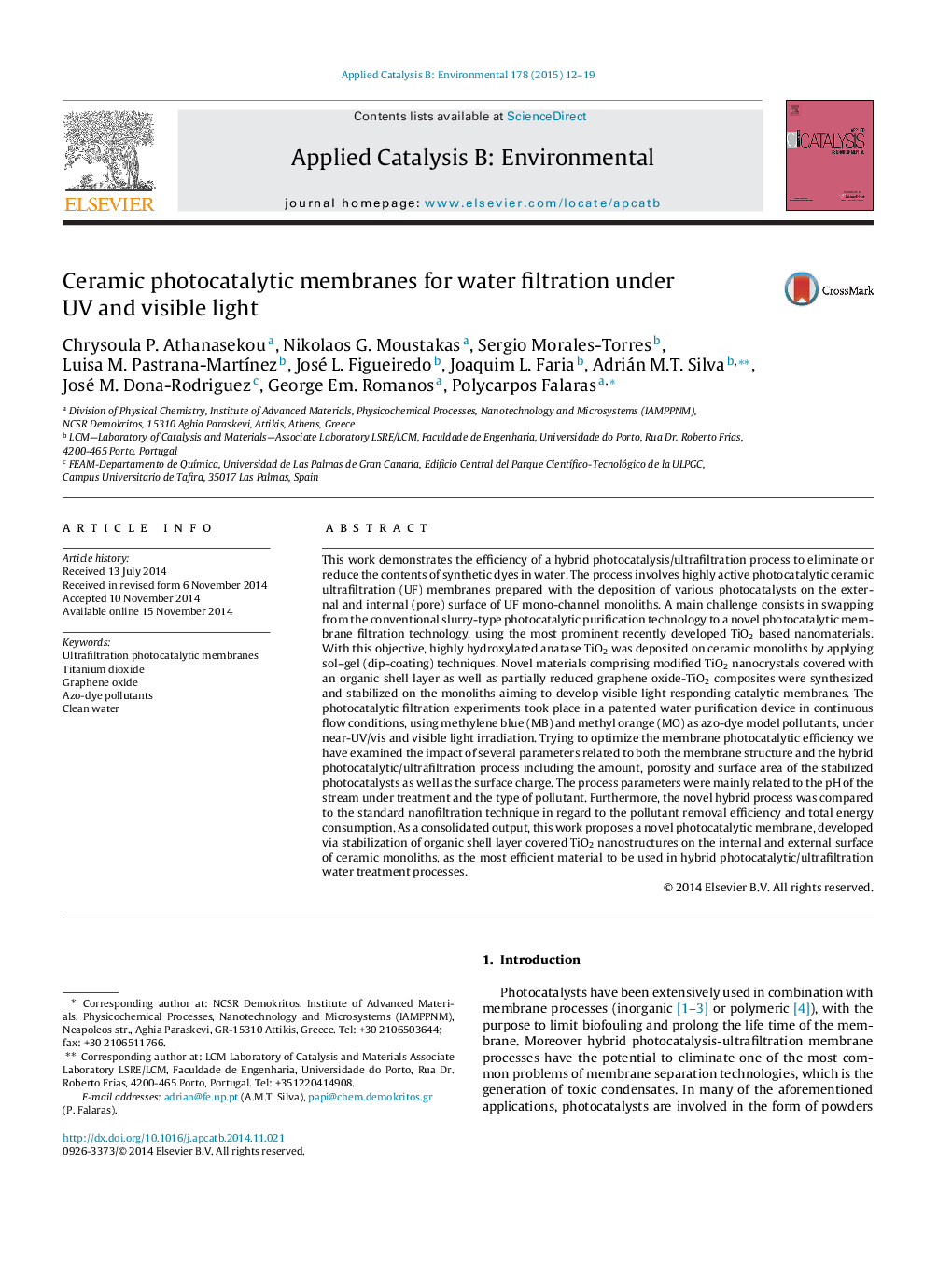| Article ID | Journal | Published Year | Pages | File Type |
|---|---|---|---|---|
| 44938 | Applied Catalysis B: Environmental | 2015 | 8 Pages |
•TiO2 modified ceramic membranes for ultrafiltration/photocatalytic water treatment.•Innovative composite membrane based on reduced graphene oxide and TiO2.•Effective MB and MO decomposition under Vis and UV irradiation.•Energy efficient process due to the photoinduced superhydrophilicity.•Increased water recovery and antifouling properties compared to common NF membranes.
This work demonstrates the efficiency of a hybrid photocatalysis/ultrafiltration process to eliminate or reduce the contents of synthetic dyes in water. The process involves highly active photocatalytic ceramic ultrafiltration (UF) membranes prepared with the deposition of various photocatalysts on the external and internal (pore) surface of UF mono-channel monoliths. A main challenge consists in swapping from the conventional slurry-type photocatalytic purification technology to a novel photocatalytic membrane filtration technology, using the most prominent recently developed TiO2 based nanomaterials. With this objective, highly hydroxylated anatase TiO2 was deposited on ceramic monoliths by applying sol–gel (dip-coating) techniques. Novel materials comprising modified TiO2 nanocrystals covered with an organic shell layer as well as partially reduced graphene oxide-TiO2 composites were synthesized and stabilized on the monoliths aiming to develop visible light responding catalytic membranes. The photocatalytic filtration experiments took place in a patented water purification device in continuous flow conditions, using methylene blue (MB) and methyl orange (MO) as azo-dye model pollutants, under near-UV/vis and visible light irradiation. Trying to optimize the membrane photocatalytic efficiency we have examined the impact of several parameters related to both the membrane structure and the hybrid photocatalytic/ultrafiltration process including the amount, porosity and surface area of the stabilized photocatalysts as well as the surface charge. The process parameters were mainly related to the pH of the stream under treatment and the type of pollutant. Furthermore, the novel hybrid process was compared to the standard nanofiltration technique in regard to the pollutant removal efficiency and total energy consumption. As a consolidated output, this work proposes a novel photocatalytic membrane, developed via stabilization of organic shell layer covered TiO2 nanostructures on the internal and external surface of ceramic monoliths, as the most efficient material to be used in hybrid photocatalytic/ultrafiltration water treatment processes.
Graphical abstractFigure optionsDownload full-size imageDownload as PowerPoint slide
